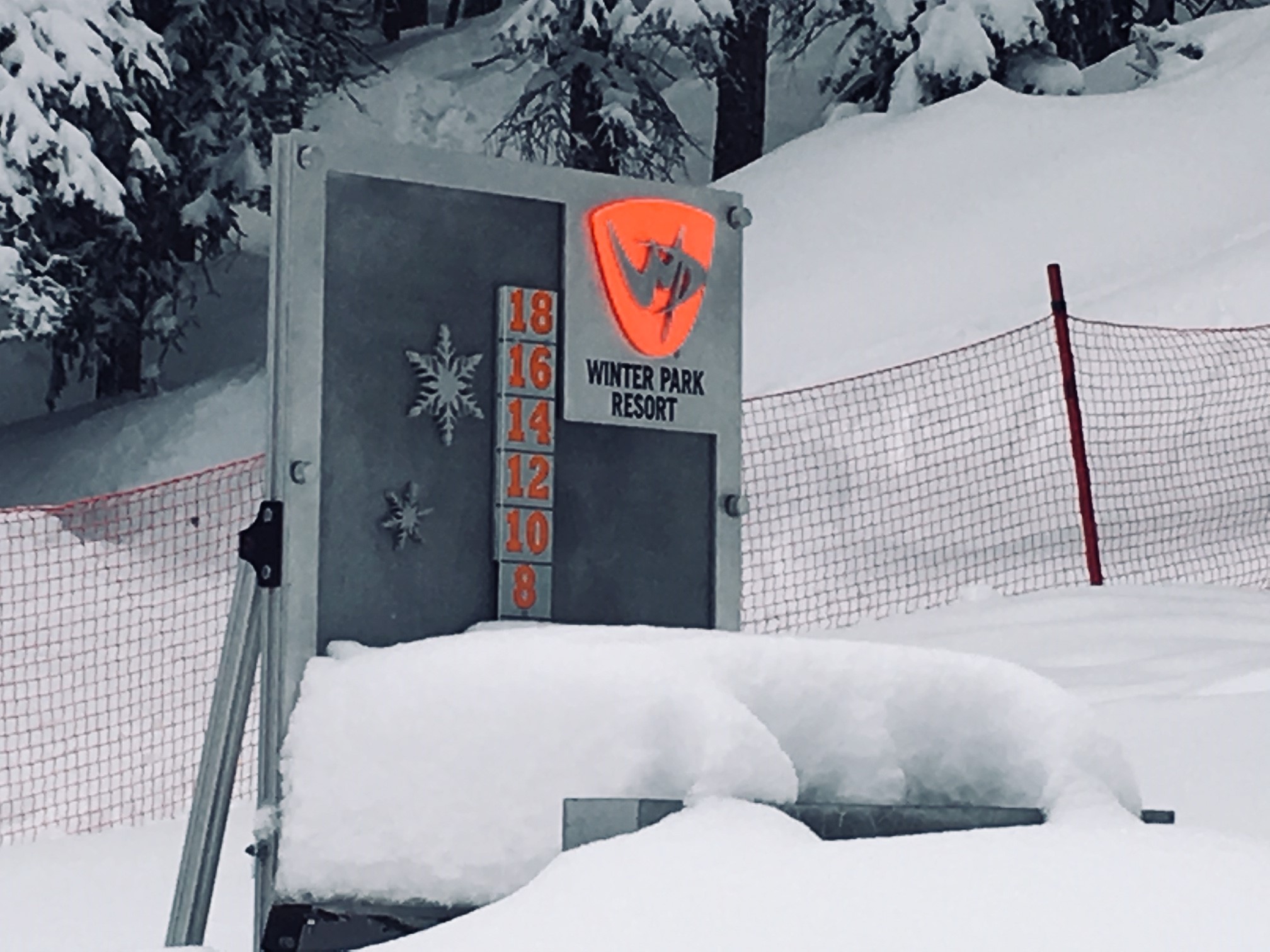
The trees were grouped tightly together, so we made one swooping turn followed by another, using the trees as slalom gates. We weren’t quite sure where we were going. Suddenly, we spied a ski patroller ahead in a clearing. What was this? Some sort of equipment was cordoned off, restricting public access, and then I realized what we had found. The elusive snow stake!
And why did I become so excited about finding a snow stake? Because the snow stake may just be the most important thing for a ski resort and attracting skiers. These days, most ski resorts not only have a snow stake but a 24-hour web cam that broadcasts the snow stake over the internet. How many mornings have I woken up in the wee hours, grabbing my smart phone to bring up the snow stake camera? How exciting is it to find 14 inches have fallen on the snow stake, or on some rare occasions to find the snow stake maxed out at more than 18 inches? It’s a skier’s dream to see copious amounts of snow on the snow stake.
The snow stake records the 24-hour snowfall for the ski resort. For most resorts, at a certain time of day, patrollers sweep the snow stake, in order to start recording the 24 snowfall all over again. At my home resort of Winter Park, the sweeping of the snow stake is at 4 p.m. when the lifts close. So looking up the snow stake camera early in the morning, lets you know how much “pow” there will be on the slopes when the lifts open the next day.
As you can imagine, like most valuable pieces of real estate, location is everything. Because Colorado resorts can be so large, and microclimates can create different snowfall rates by altitude and other variables, the snow stake is supposed to be located somewhere mid-mountain. Putting it at the bottom of the mountain wouldn’t record near as much snow, but having it at the summit would be misleading, showing more snow than what is actually on the trails. But it’s also important to be in a place protected from winds blowing the snow away, and also far away from where the general public can find it.
Snow stakes and their webcams provide a quick snapshot of how much snow each resort has gotten during snow storms and often determine where skiers who hold multi-resort passes like Epic Pass or Rocky Mountain Super Pass will choose to ski for that day. Local powder forecaster, Joel Gratz, of Opensnow, frequently references snow stake totals when providing his morning blog posts. It also evens the playing field in terms of providing real time transparency of actual snowfall.
Before snow stake webcams, skiers depended on the snow report provided by the resort’s marketing department. In olden days, the trail and snow report got printed and posted. Since the internet, the daily snow report is usually on the home page. But how do we know to trust what they’re reporting?
When we first moved to Colorado, I routinely heard of certain resorts over-reporting their snowfall. Imagine conjuring up visions of an epic powder day, only to arrive, park and go skiing to find a couple of inches of dust on crust. The advent of the Snow Stake webcam means those kind of disappointments don’t really happen anymore.
For some reason, the local ski resort here in Nederland, Eldora, doesn’t have a snow stake camera. Which automatically makes me suspicious. Perhaps they don’t want people to know the actual snow that has fallen compared to other resorts….
I won’t give away where Winter Park’s snow stake is, other than to say it is mid-mountain on the Mary Jane side of the resort. Mary Jane, being located closer to Berthoud Pass, receives more snow on average than the Winter Park side of the resort, and is favored by locals. But finding the actual snow stake was sort of like finding the holy grail.

